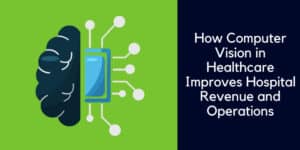What’s inside:
Read about our article in HIT Consultant magazine, where our CEO discusses:
- Product usage documentation during surgery
- Barcode limitations in the surgical setting
- The benefits of 2D barcodes in healthcare
- The limitations of 2D barcodes at the point of care
- The barcode obsession
- Image-recognition – a better alternative to 2D barcodes
Many providers are using barcode scanning at the point of care to record supply utilization, but there are so many reasons that this old technology simply isn’t fit for purpose.
Our CEO and Founder, Shlomo Matityaho recently penned an article for HIT Consultant magazine, which provides many insights into Health IT and Digital Health.
The article, titled, The Limitations of 2D Barcodes for Surgical Documentation, looks at why new 2D codes still don’t rectify the issues that have always prevented barcode technology from being an effective tool in the surgical setting. Shlomo discusses the limitations of barcode systems for point of use supply documentation and outlines why image recognition technology is the way forward.

Let’s take a look at a few highlights from the article:
Product usage documentation during surgery
Monitoring medical inventory is a crucial aspect of supply chain management in healthcare, but there is one particularly problematic setting for supply chain data capture, and that is the point of care.
Healthcare facilities need to accurately capture consumption data in order to be compliant with regulation such as the FDA UDI regulations, that require healthcare stakeholders to digitally track medical devices and implants throughout their lifecycle.
Existing data collection processes in operating rooms and procedural areas are known to be inefficient, but this is an area that healthcare providers need to tackle. Accurate surgical not only enhances patient care, it is also a vital driver for healthy operations, administration, and performance.
Barcode scanning systems are common in many hospitals, ambulatory surgery centers and other healthcare facilities. They are often the go-to hardware being used to document product usage documentation at the point of care, yet there are many reported issues relating to reliability.
Barcode limitations in the surgical setting
Perioperative nurses report multiple problems when using barcode scanning at the point of care including:
- Barcode Readability issues.
- Multiple barcodes on each product packet.
- Information gaps on the system after scanning the item, requiring manual ‘data fixes’.
- Unable to identify the item on the system – due to no data match with the Item Master.
The benefits of 2D barcodes in healthcare
This ‘next generation’ of 2D barcodes is being hailed as a better way to scan product data, and many stakeholders such as GS1, which is a 2D data carrier, are on board.
The benefit of 2D codes, as compared to 1D codes, is that they can store much more product information in one central place.
So, could t2D barcode technology solve the existing point-of-care data collection issues, or is barcode scanning simply the wrong technology for this setting?
Healthcare supply chain management relies upon the end-to-end tracking of items, and a crucial stage is documenting consumption.
The point of care, however, has specific challenges:
- The items used in surgery are not always stock items.
- ‘Bill-only’ or trunk stock items, and consignment products that aren’t pre-enrolled on the system may be used.
- Perioperative documentation during surgery is more likely to result in full, timely and accurate patient records, however, the priority for patient care, and the limitations of current systems, make this difficult to achieve.
The limitations of 2D barcodes at the point of care
We’ve looked at why the surgery setting is so problematic for product documentation, so now let’s see the stumbling blocks for 2D barcodes.
An item needs to go through the following stages to be recorded in the electronic medical record (EHR):
Collection: Product consumption data needs to be captured in the patient file – the data must be full and accurate.
Identification: Hospitals rely on their Item Master as the source of truth. Maintaining this item catalog is difficult due to the vast volume of SKUs stored, and constant updates to item data. Another issue is the wide range of non-stock items that are used in surgery. Some of these may not be listed in the item master, at all. Where Item Master pairing isn’t achieved, nurses will see a system error displayed on the screen and will then need to look at a manual workaround.
Documentation: Successful documentation requires data collection and product identification to have been successful. In order to achieve documentation, the hospital system needs to be integrated and compatible with the data capture software.
Although there are certainly benefits to the greater storage capacity of 2D barcodes, the complexity of managing inventory at the point of care is exposing the limitations of this system. Continuing reliance on the Item Master is the biggest negative of 2D barcodes.
The barcode obsession
Barcode technology has struggled in the surgery setting, yet the industry continues to invest in it.
It seems like the healthcare sector and health-tech companies have a barcode fixation – continually creating new versions of the same technology.
Surgical data capture needs a new approach, not the upgrade of an inadequate system.
The next generation of surgical supply data capture isn’t 2D barcodes, it’s image recognition and AI technology.

A better alternative to 2D barcodes
Breakthrough technology is providing a brand-new approach to surgical data collection, making it quick and easy for nurses to capture every product used in surgery.
Collection: Computer-vision technology ‘reads’ product packaging (the whole box or label, not just the barcode). Hand-written Implant Sheets can also be ‘read’ and digitized using computer vision sensors.
Identification: Item identification is automated via a globally populated cloud database. All relevant details are automatically extracted, including SKU, batch number and expiry date.
Documentation: Seamless interoperability ensures 100% item and charge capture in all core systems, such as the ERP, EHR and MMIS.
Snap&Go uses the triple technology of AI, machine learning and image recognition technology transform surgical data capture into a simple 3-second task.
The point of use is a challenging environment to capture full and accurate usage data.
Image-to-data technology outperforms 2D barcode systems when it comes to documenting surgical utilization.
Here’s a link to the full article:
https://hitconsultant.net/2023/12/18/the-limitations-of-2d-barcodes-for-surgical-documentation/
Snap&Go is an image recognition sensor that captures item information from the product packet or label, and then converts the image into digital data, saving it in the electronic health record.
An AI managing system and a virtual item master ensure that all relevant data from every item consumed in surgery is collected and documented in the system.
Contact us to find out more about the image-to-data revolution.






